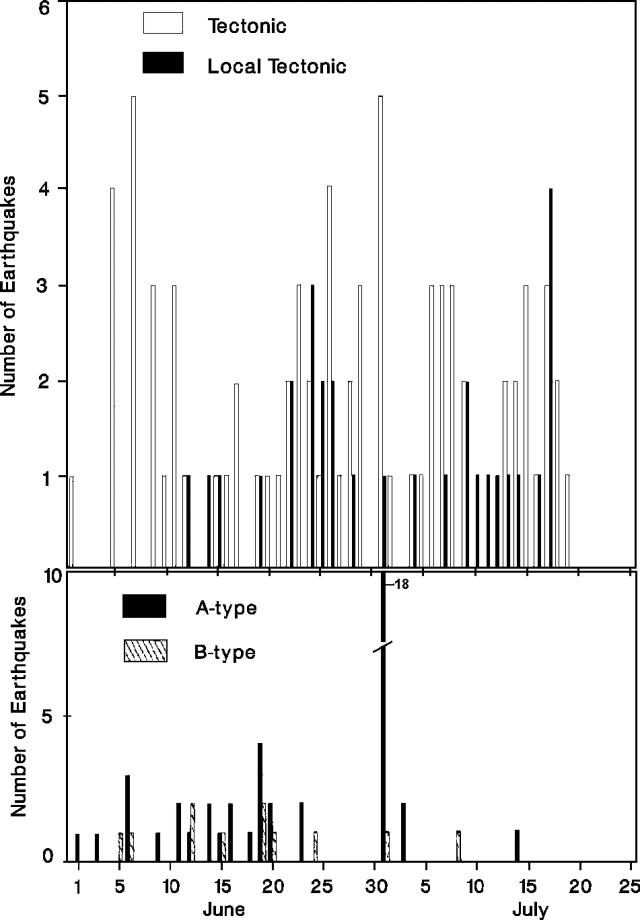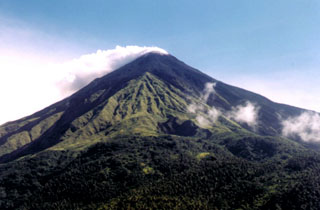Report on Karangetang (Indonesia) — June 1992
Bulletin of the Global Volcanism Network, vol. 17, no. 6 (June 1992)
Managing Editor: Lindsay McClelland.
Karangetang (Indonesia) Some decline in explosive activity, lava production, and seismicity, but glowing rockfalls advance 1.5 km
Please cite this report as:
Global Volcanism Program, 1992. Report on Karangetang (Indonesia) (McClelland, L., ed.). Bulletin of the Global Volcanism Network, 17:6. Smithsonian Institution. https://doi.org/10.5479/si.GVP.BGVN199206-267020
Karangetang
Indonesia
2.781°N, 125.407°E; summit elev. 1797 m
All times are local (unless otherwise noted)
Activity began to increase in February 1992. Glowing rockfalls on 18 May filled the upper Keting river valley to 4 km from the crater. The volume of the deposit was estimated at 1.2 x 106 m3, ~ 20% of the dome (17:04). Since then, the eruption has fluctuated, but a general decrease in intensity was indicated by declines in the height of the ash plume, the behavior of the glowing lava flow, and the vigor of incandescent tephra ejection. In July, glowing rockfalls advanced down the Keting river to 1,500 m from the crater. The number of volcanic and local tectonic earthquakes decreased in June and July compared to previous months. June-July seismicity was dominated by surface activity, such as explosion earthquakes and rockfalls (figure 2).
 |
Figure 2. Tectonic seismicity (top) and volcanic earthquakes (bottom) at Karangetang, June-July 1992. Courtesy of VSI. |
Geological Summary. Karangetang (Api Siau) volcano lies at the northern end of the island of Siau, about 125 km NNE of the NE-most point of Sulawesi. The stratovolcano contains five summit craters along a N-S line. It is one of Indonesia's most active volcanoes, with more than 40 eruptions recorded since 1675 and many additional small eruptions that were not documented (Neumann van Padang, 1951). Twentieth-century eruptions have included frequent explosive activity sometimes accompanied by pyroclastic flows and lahars. Lava dome growth has occurred in the summit craters; collapse of lava flow fronts have produced pyroclastic flows.
Information Contacts: W. Modjo, VSI.

